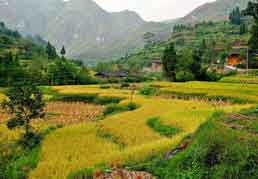Mayak is a small settlement close to the frontline, which stretches across Blue Nile. Just outside town, a path leads to a wide, dry riverbed. Groups of people — mostly women and kids — are spread out, each under a different patch of shade. Ayak sits with a snoozing baby, her children scampering nearby. Her husband, a rebel soldier, was killed in battle. “I am really suffering,” she says. “Maybe, if he was here, we could share this burden together.” Photo: IRIN
by Amanda Sperber, Ashley Hamer, Alex Pritz, Will Miller, and Ross Martin IRIN News July 18, 2016
Eclipsed by the media coverage of Darfur and South Sudan, a little-known rebellion lingers in the southeastern corner of Sudan. The roots of the conflict are long and winding, but for the civilians caught in the midst of Blue Nile's insurgency the ef...













